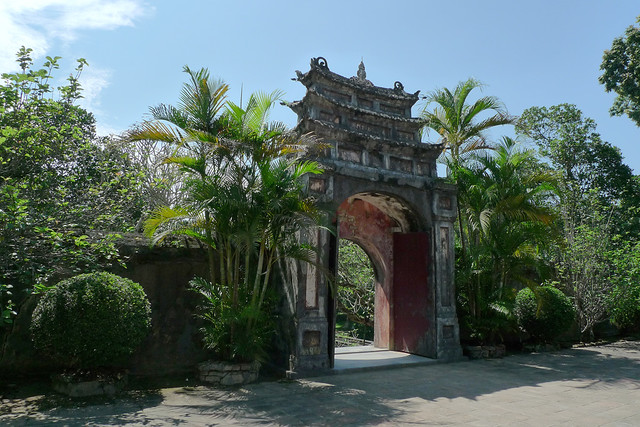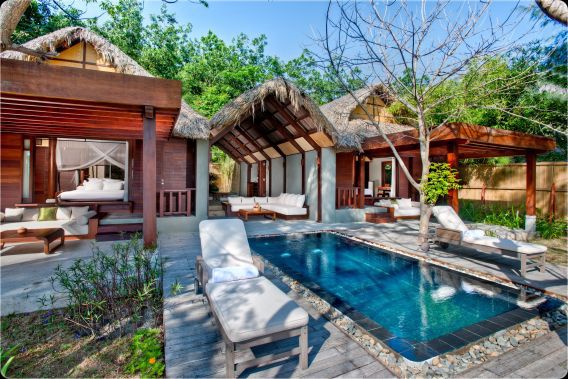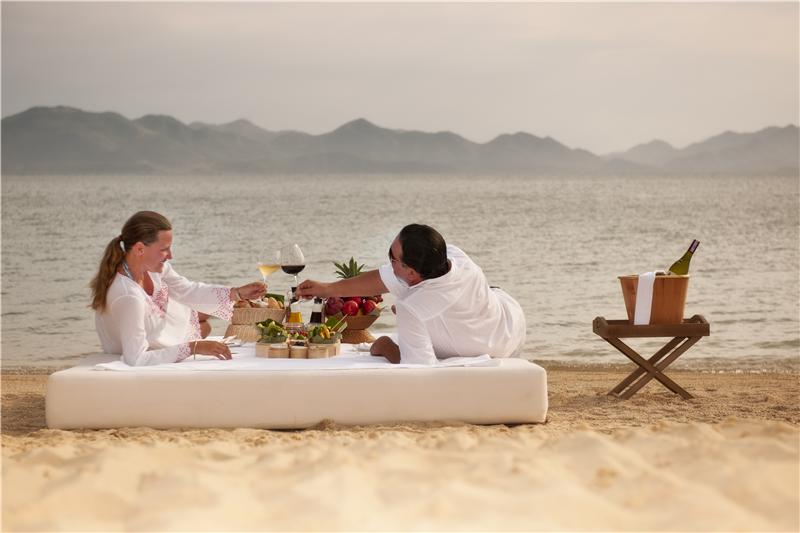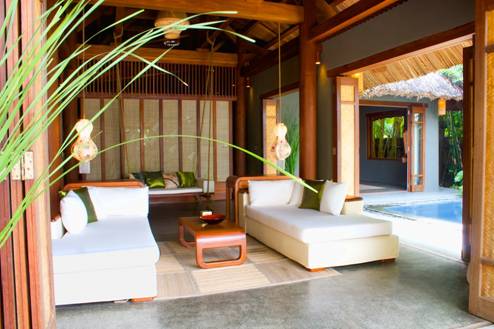Thap Ba or the architectural complex of the ancient Ponagar Temple Towers is the most unique symbol of the long-standing culture of the Cham people. It is located on a hill near the Cai River, 2km to the north from the center of Nha Trang.
The Ponagar complex consists of three floors with a gate tower on the first floor which was totally destroyed. In front of the relic complex are two rows of 10 large pillars and two small pillars on the two sides. In the middle is an altar where the Cham people often organize cultural activities and solemn rites on festivals and special occasions. The second floor, called Mandapa (guest house), is the place where pilgrims can rest and prepare offerings and costumes before practising the rite. On the third floor, there are four towers, including the 23m high Ponagar Tower which is the most outstanding and highest one. The four-storey tower symbolizes the beauty, art and creativeness of the Cham people. Inside the tower, there is a statue of a goddess made of black granite, 2.6m high, sitting on a lotus-shaped stone base, leaning back on a large fig leaf-shaped stone plate.
The statue is considered a masterpiece of the Cham sculpture. The other three towers are dedicated to the Indian supreme God of Shiva and his two sons, Gods Sanhaca and Ganeca.
The Ponagar complex consists of three floors with a gate tower on the first floor which was totally destroyed. In front of the relic complex are two rows of 10 large pillars and two small pillars on the two sides. In the middle is an altar where the Cham people often organize cultural activities and solemn rites on festivals and special occasions. The second floor, called Mandapa (guest house), is the place where pilgrims can rest and prepare offerings and costumes before practising the rite. On the third floor, there are four towers, including the 23m high Ponagar Tower which is the most outstanding and highest one. The four-storey tower symbolizes the beauty, art and creativeness of the Cham people. Inside the tower, there is a statue of a goddess made of black granite, 2.6m high, sitting on a lotus-shaped stone base, leaning back on a large fig leaf-shaped stone plate.
The statue is considered a masterpiece of the Cham sculpture. The other three towers are dedicated to the Indian supreme God of Shiva and his two sons, Gods Sanhaca and Ganeca.
 The Ponagar Tower Complex. 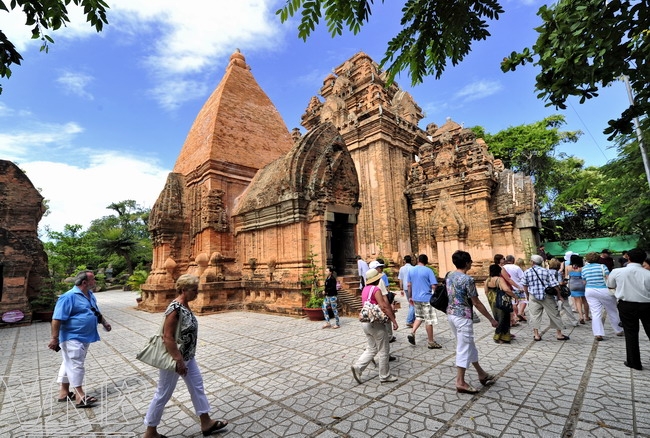 The Ponagar Temple Towers attracts a large number of foreign tourists. 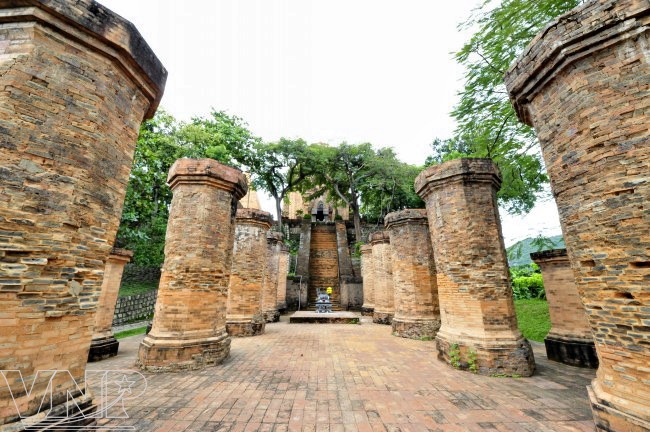 Two rows of large pillars in front of the relic complex. 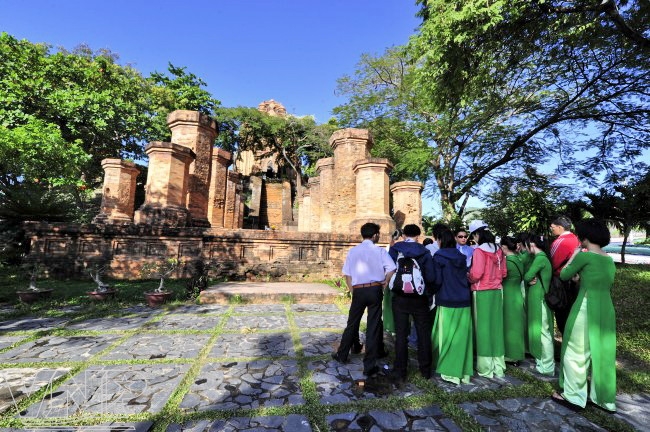 Visitors learn about the history of the Ponagar Tower Complex. 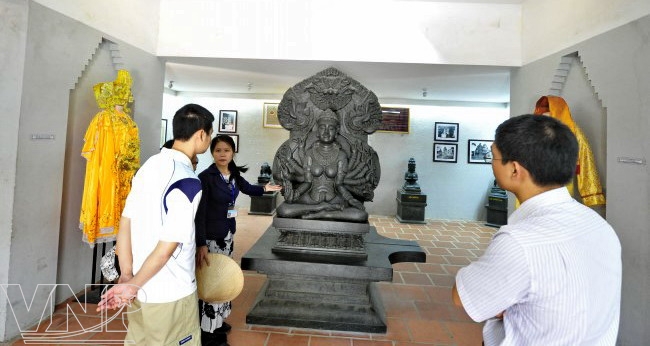 The exhibition hall at the Ponagar Tower Complex. |
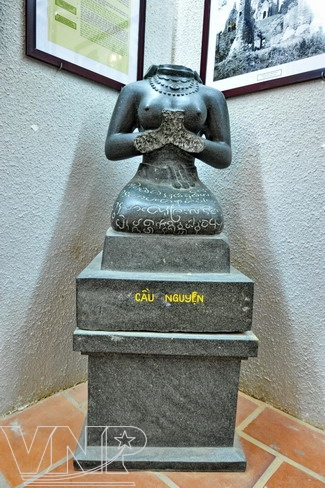 An exhibit at Ponagar Tower Complex. | 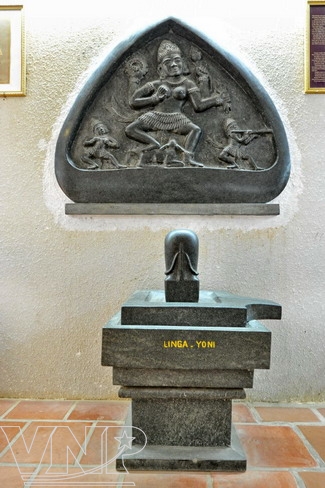 An exhibit at Ponagar Tower Complex. |
The Ponagar Tower is not only a historical and cultural relic, but also a typical architectural and sculptural work of the Cham people. All the towers were built using bricks and decorated with stones and ceramics. So far, the Cham people’s technique on placing bricks tighter together without any kind of mortar or adhesive has remained a secret to researchers.
Every year, the locals organize the Thap Ba (Ponagar) Festival from March 20th to the 23rd according to the lunar calendar to praise the merits of Thien Y Thanh Mau Ana, the Goddess who reclaimed new lands, kept the race alive, found the rice and taught the local people to cultivate and make handicraft products. During the festival, many religious rites and cultural activities are held in front of the main tower, including ceremonies to pray for peace, happiness and prosperity and performances of dancing, singing and acting out old stories.
Every year, the locals organize the Thap Ba (Ponagar) Festival from March 20th to the 23rd according to the lunar calendar to praise the merits of Thien Y Thanh Mau Ana, the Goddess who reclaimed new lands, kept the race alive, found the rice and taught the local people to cultivate and make handicraft products. During the festival, many religious rites and cultural activities are held in front of the main tower, including ceremonies to pray for peace, happiness and prosperity and performances of dancing, singing and acting out old stories.
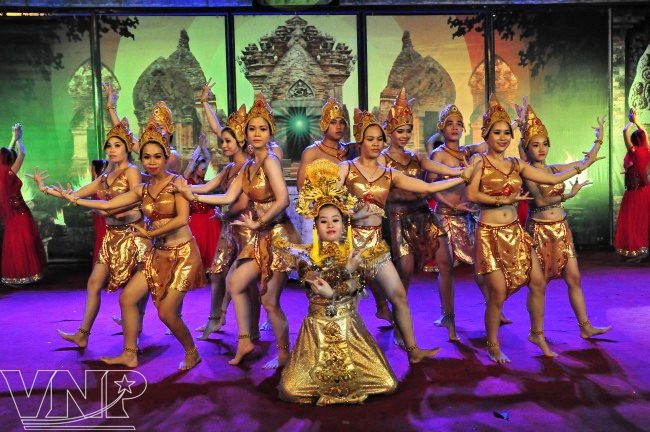 The legendary Ponagar dance. 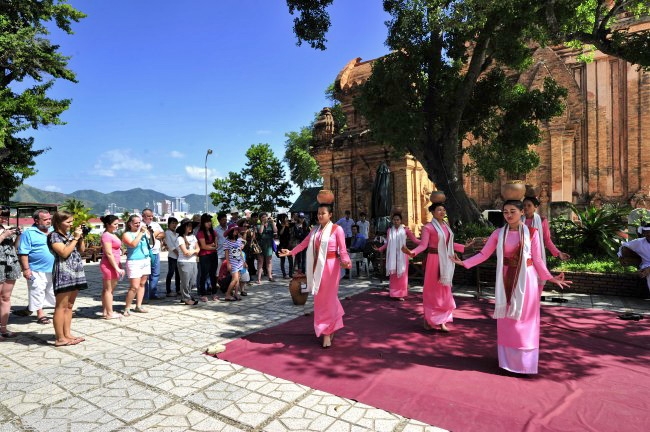 A Cham dance is performed at the Ponagar Tower. 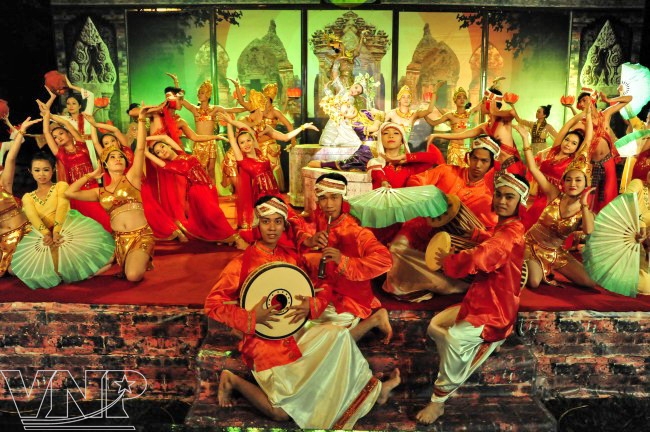 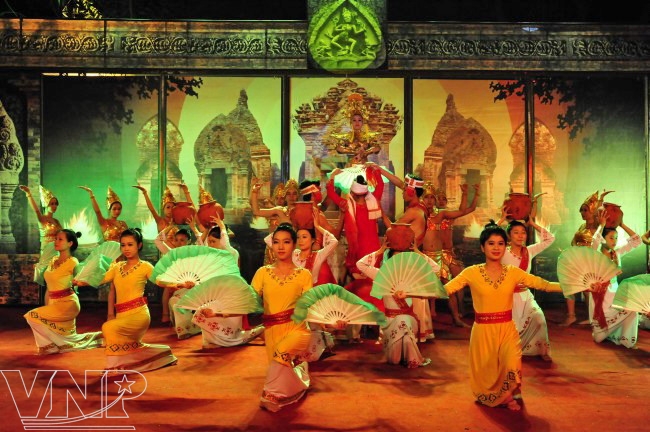 An artistic performance at the relic complex. 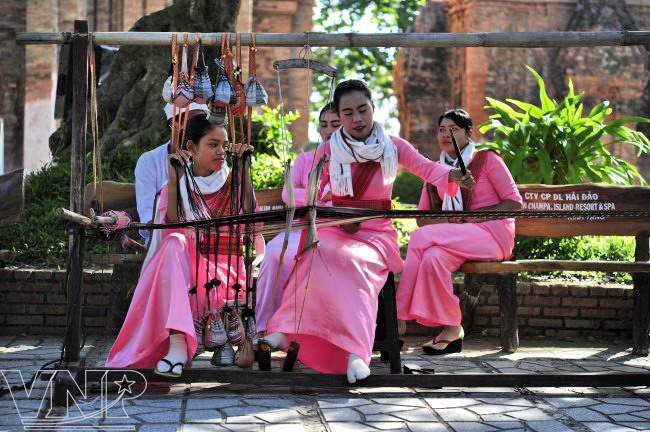 Cham girls perform the technique on weaving brocade. |
To introduce and promote the unique cultural features of the Cham people, the management board of the Thap Ba Tower Complex invites Cham dancers and artisans to participate in some artistic programmes held on Saturday and Sunday nights to entertain tourists. Visiting the complex, tourists seem to go back to the origin of the once flourishing Cham culture.





